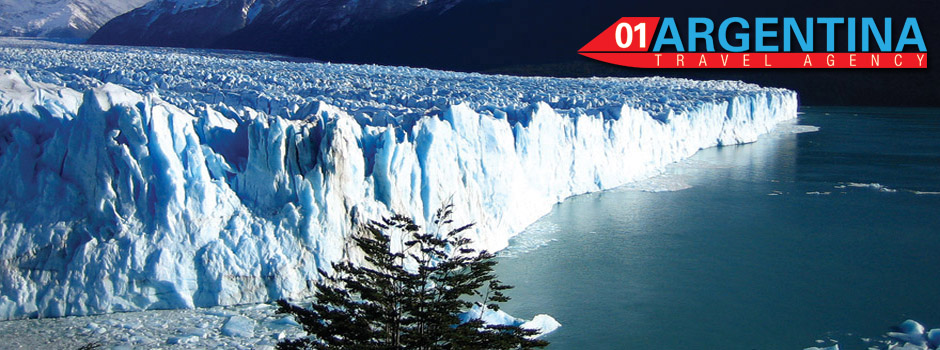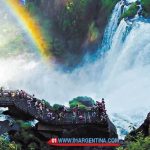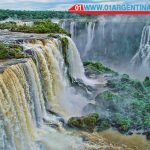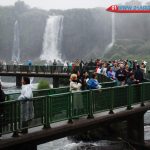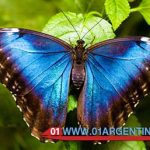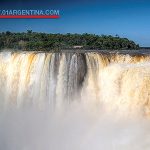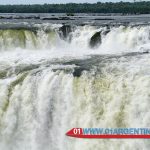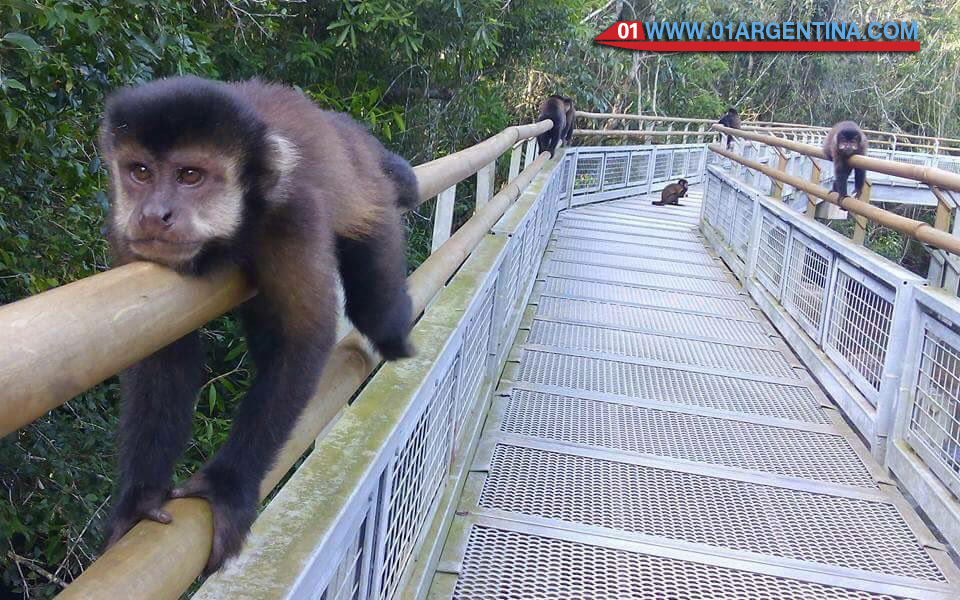
The Iguazú National Park, located north of the Misiones province and belongs to the Iguazú-Argentina department, was created to preserve the Iguazú Falls.
The Iguazú National Park in Argentina and the Iguazú National Park in Brazil are responsible for protecting and conserving the extensive territory where the falls are located. Visit Iguazú Falls, an International tourist pole, since Brazil and Argentina.
The Iguazú National Park, created in 1934 by Law 12.103, has some 67,620 hectares that have been Natural Patrimony of Humanity since 1984, thanks to its scenic beauty and the biological variety that exists in the subtropical forest.
This spectacle of nature considered one of the wonders of the world, since about 200 thousand years ago on the site that today bears the name “Milestone of the Three Borders”, where the Iguazú and Paraná rivers meet.
If you plan to travel to know this paradisiacal place and enjoy this spectacle of nature, here are 10 things you can not miss:
1. Take a tour of the “Great Adventure Safari” on the side of the Brazilian waterfalls.
2. Get on the ecological train and take part in a spectacular journey through all its stations.
3. Visit the ruins of San Ignacio, the Wanda Mines, or visit the beautiful Guaraní Village.
4. Take a walk through the upper circuit and watch the falls from the top of the Iguazú River.
5. If you want to observe the impressive falls from below then you must make the journey from the lower circuit that has a variety of walkways that cross the falls.
6. Visit the Devil’s Throat, it is called the most imposing jump of the whole park, since it has a fall of 80 meters high, there you will live an unforgettable experience.
7. When eating, nothing better than going to visit the Restaurant “La Selva” where they serve a variety of Argentine dishes, as well as international dishes.
8. Get on the jungle train and have a romantic tour under the moonlight that ends with a dinner at La Selva restaurant.
9. In the heart of the Falls visit “La Ventana” which is a rock formation where you can see the hidden jump.
10. Finally, before the farewell of this spectacular National Park, do not forget to bring some souvenir or gift of the place, as well as postcards that will serve you to remember your visit.
You can admire between 160 and 260 jumps. The speed of the fall produces a permanent fog, thus producing multiple rainbows that leave us amazed by its beauty. This enigmatic will envelop you in a myriad of emotions that will leave you eager to repeat the experience, it is ideal for those who want to make tourism and also are nature lovers, who enjoy interacting with this type of shows that only we can present our mother nature.
Iguazu Falls in Argentina
It is one of the most visited destinations in Misiones and Argentina. Recognized as one of the new seven natural wonders of the world and also as a World Heritage Site by Unesco, it is an incredible spectacle that combines the most lush jungle with strong waterfalls
The Iguazu Falls are a spectacle that nobody should miss. They were recognized as one of the new seven natural wonders of the world and also as a World Natural Heritage by Unesco. Its imposing landscape combines the most lush jungle with the famous waterfalls and is one of the most visited destinations in Misiones.
The falls are scattered along cliffs and islets in the middle of the vegetation, and the panoramic views from the footbridges and viewpoints attract visitors from all over the world. There is also the option of touring the jungle with the ecological train and, on the nights of the full moon, there are walks that invite you to feel the majesty of the Falls illuminated by the light of the missionary moon.
The Iguazú National Park is located near Puerto Iguazú, province of Misiones. It has an area of 67,620 hectares belonging to the Selva Paranaense ecoregion. The Iguazú River, which means large water in Guarani, flows into the Paraná and runs 1,500 meters wide, splashing islands and islets to empty into a lava ravine formed 120 million years ago.
Gregorio Lezama was the first owner of these lands and, considering them of little value, he sold them in a public auction whose advertisement read “block of jungle bordering several waterfalls”. Its next owner, Domingo Ayarragaray, promoted it partially, placing a hotel and roads so that visitors could see the falls and exploited the wood treasure of the place until it was acquired by the government of President Hipólito Yrigoyen.
How to get
To access by car, from Posadas to Iguazú, along Route 12 and 101 to the access portal to the Park, a total of 320 kilometers. It can also be accessed with other means of transport.
Puerto Iguazú is located 18 kilometers from the park and receives buses from all over the country. The airport is located 7 kilometers from the Cataratas Area, it receives daily flights from Buenos Aires and Córdoba. From these points you can reach the Park by rental car, taxi, remis or resorting to the services of a tourism agency. From Puerto Iguazú, a bus leaves every half hour to the park between 6:30 and 7:00 p.m.
Schedule and weather
The schedule of the park is from 8 to 18 hours throughout the year.
The Iguazú National Park preserves a sample of the Ecoregion of the Paranaense Forest, also called the Alto Paraná Atlantic Forest, which is the most biodiverse in the country. The climate is tropical serrano with dry season. Average temperatures range from 24ºC in summer to 14ºC in winter. The rainfall is 1800 millimeters per year, concentrated in the summer season.
Flora and fauna in Iguazu
Its exuberant jungle abounds in lianas, epiphytes and ferns. In different places it presents different types of compositions, with predominance of certain species, such as the palm heart and rosewood forest, giant jungle tree with about 40 meters of height) or that of laurel and guatambú.
In addition, the riparian forest is located on the margins of bodies of water. The different layers of the jungle offer different options to the varied fauna that inhabits this Park.
With different species such as monkeys, coatis, serelepes squirrels, toucans, a variety of colorful fruit trees, noisy magpies and even some margay, which are located in their trees. On the ground are the agouti, cuises, corzuelas, mountain foxes, overo lizard and, by their tracks, it is possible to guess the presence of the yaguareté.
In the water, some yacaré, the aninga or biguá viper neck and water turtles, along with numerous fish, are common presences. From the sky, jotes and swarms of swifts cascade (this last emblematic of the protected area) are inevitable actors of a winged concert by other striking.

